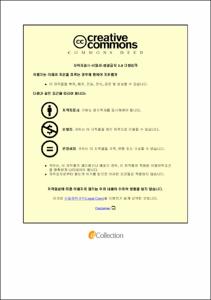청년층 자살행동과 관련된 변인에 대한 메타분석
- Alternative Title
- Meta-Analysis on the Variables Related to the Suicide Behavior of Youth
- Abstract
- 본 연구의 목적은 청년 자살행동 관련 변인들을 확인하고, 관련요인의 효과 크기를 종합적으로 분석하는 것이다. 이를 위해 2000년부터 2019년 8월까지 발간된 청년 자살행동 관련 국내 학술지 및 학위논문 38편을 선정하여 메타분석을 실시하였다. 생태체계 분류에 따라 5개의 변인군과 24개의 하위변인으로 분류하여 어떤 변인들이 청년 자살행동과 보다 관련이 있는지 확인하였다. 연구결과를 요약하면 다음과 같다.
첫째, 청년 자살행동 관련 변인은 배경 변인군, 개인 변인군, 가족환경 변인군, 사회환경 변인군, 사회문화 변인군으로 분류하였다.
둘째, 5개의 변인군을 분석한 결과, 사회환경 변인군이 청년 자살행동을 가장 잘 예측하는 것으로 나타났고, 그 다음으로는 배경 변인군, 개인 변인군, 가족환경 변인군, 사회문화 변인군 순으로 청년 자살행동 예측력이 높은 것으로 확인되었다.
셋째, 각 변인군별 효과크기를 분석한 결과, 배경 변인군에서는 나쁜 건강상태, 학대경험 등이 청년 자살행동을 가장 잘 예측하였고, 자살노출 경험, 연령, 성별 순으로 효과크기가 큰 것으로 나타났다. 개인 변인군에서는 우울이 자살행동을 가장 잘 예측하고 있었고, 자기침묵, 무망감, 속박감, 충동성 순으로 효과크기가 컷다. 사회환경 변인군에서는 취업스트레스의 효과크기가 가장 높았고, 지각된 생활스트레스, 인간관계스트레스, 정서중심대처, 학업스트레스 순으로 효과크기가 큰 것으로 확인되었다. 사회문화 변인군의 경우, 인터넷 중독 변인 하나만 포함되었는데, 이는 청년층에서도 인터넷 중독 변인이 자살행동을 유의하게 예측하는 것으로 나타났다.
넷째, 변인군 별로 구분하지 않고 청년층 전체를 대상으로 효과크기를 분석한 결과, 우울이 청년 자살행동을 가장 잘 예측하는 변인으로 나타났다. 이 외에도 취업스트레스, 지각된 생활스트레스, 낙관성, 학대경험, 가족관계 스트레스 순으로 높은 효과크기를 보였다.
본 연구를 통해 청년 자살행동 관련 변인을 찾아냄으로써 청년 자살 예방과 상담적 개입을 위한 유용하고 실증적인 기초 자료를 제시할 수 있었다. 이는 청년 자살예방 교육 프로그램 및 관련 후속 연구들의 방향성과 접근 방안을 제시할 수 있었다는 점에서 의의가 있다.
The purpose of this study is to identify variables related to youth suicide behavior and to analyze the effect size of related factors comprehensively. To this end, 38 domestic academic and academic papers on youth suicide behavior published from 2000 to August 2019 were analyzed by meta-analysis and classified as five variable groups and 24 sub-variates to see which variables were more related to youth suicide behavior. The results of the study are summarized as follows.
First, the government classified the variables related to the behavior of young people's suicide into five groups: the background group, the personal group, the family environment group, the social environment group, and the social culture group.
Second, the analysis of the five variable groups showed that the social environment variable group was the best predictor of youth suicide, followed by the background variable group, the individual variable group, the family environment variable group, and the social culture variable group.
Third, as a result of analyzing the size of the effects of each variable group, in the background group, poor health conditions was the best predictive of the youth's suicide behavior, followed by experience of abuse, the suicide exposure experience, age, and gender. In the personal variable group, depression was the best predictive of suicide behavior, followed by self-silence, ignorance, bondage, and impulsiveness. In the family environment variable group, the effect size of family relationship stress was the largest, and open family communication was shown as a protective factor. In the social environment variable group, the effect size of employment stress was the highest, followed by the perceived life stress, human relations stress, emotional treatment, and academic stress. The social culture variable group included only one Internet addiction variable, and the Internet addiction variable also showed a significant prediction of suicide.
Fourth, as a result of analyzing the effect size of the entire variable without distinguishing the variable group, depression was found to be the best predictor of youth. In addition, it showed high effects in the order of employment stress, perceived life stress, optimism, experience of abuse and family relationship stress.
Through this study, empirical basic data for youth suicide prevention and counseling intervention could be presented by finding variables related to youth suicide behavior. This is significant in that it was able to present follow-up research directions for youth suicide prevention and related studies.
The suggestions and implications of this study were excluded.
- Issued Date
- 2020
- Awarded Date
- 2020. 8
- Type
- Dissertation
- Publisher
- 부경대학교
- Alternative Author(s)
- Lee Heeryoung
- Affiliation
- 부경대학교 대학원
- Department
- 대학원 교육컨설팅학과
- Advisor
- 천성문
- Table Of Contents
- Ⅰ. 서 론 1
1. 연구의 필요성 및 목적 1
2. 연구 문제 5
3. 용어의 정의 6
Ⅱ. 이론적 배경 8
1. 청년 자살행동 8
2. 청년 자살행동 관련 선행 연구 10
3. 청년 자살행동에 대한 관련 변인 14
Ⅲ. 방 법 36
1. 분석대상 자료의 수집 및 선정 36
2. 자료의 분석 38
Ⅳ. 결 과 48
1. 분석대상 논문의 일반적 특성 48
2. 청년 자살행동의 주요 변인 간의 메타분석 49
3. 출간오류 검증 54
Ⅴ. 논 의 57
1. 전체 및 변인군별 효과크기 57
2. 배경 변인군의 효과크기 58
3. 개인 변인군의 효과크기 60
4. 가족환경 변인군의 효과크기 61
5. 사회환경 변인군의 효과크기 62
6. 위험 및 보호변인 효과크기 63
7. 결론 및 제언 64
참고문헌 67
Abstract 82
부 록 84
메타분석 대상 논문 84
- Degree
- Master
- Files in This Item:
-
-
Download
 청년층 자살행동과 관련된 변인에 대한 메타분석.pdf
기타 데이터 / 1.56 MB / Adobe PDF
청년층 자살행동과 관련된 변인에 대한 메타분석.pdf
기타 데이터 / 1.56 MB / Adobe PDF
-
Items in Repository are protected by copyright, with all rights reserved, unless otherwise indicated.